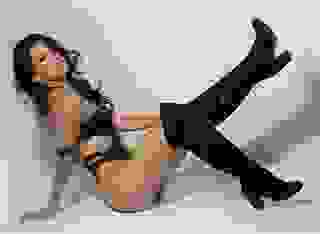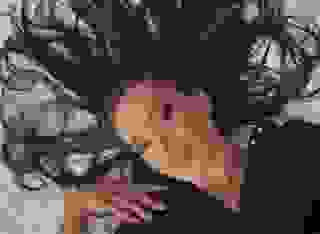- How To
- US English 101: Parts of a Sentence
Note: You can change font size, font face, and turn on dark mode by clicking the "A" icon tab in the Story Info Box.
You can temporarily switch back to a Classic Literotica® experience during our ongoing public Beta testing. Please consider leaving feedback on issues you experience or suggest improvements.
Click hereEnglish 101 is brought to you by Lindiana, who holds her Bachelor of Science Degree in Secondary Education/English.
*
You can use two terms,subject andpredicate, to describe most sentences. However, there are other names and functions of important sentence elements at your disposal. We will review those elements.
Subject and Predicate
A sentence consists of two basic parts: thesubject and thepredicate. The subject of the sentence is that part of the sentence about which something is being said. The predicate of the sentence is that part of the sentence that says something about the subject.
These two parts of the sentence may consist of a single word or multiple words. The whole subject is then referred to as thecomplete subject; the whole predicate, thecomplete predicate.
Thesimple subject of a sentence is the principal word or group of words in the subject. An example: A large body of students (the subject here isa large body of students; the simple subject;students)
The principal word or group of words in the predicate is called thesimple predicate, or theverb. An example: the writers planned a seminar (the predicate isplanned a seminar; simple predicate, or verb:planned)
Acompound subject consists of two or more subjects that are joined by a conjunction and have the same verb. The usual connecting words areand andor.
An example: The novelists and poets gathered in the conference room. (the compound subject:the novelists and poets)
Acompound verbconsists of two or more verbs that are joined by a conjunction and have the same subject: An example: Annabelle picked up her books and left for school. (compound verb:picked up...left)
To find the subject of a sentence, first find the verb (simple predicate) or as we sometimes call it the action word. Then ask yourself the question "Who or what?" An example: The bell rang loudly through the school. First find the action...rang. Then ask yourself who or what rang. The answer is thebell. In addition to this simple formula for finding the subject, please keep in mind the following facts:
1.) In sentences expressing a command or request, the subject is alwaysyou, even though the wordyou may not appear.
2.) The subject of a sentence is never in a prepositional phrase.
(example: Neither of the children rode their bikes. The verb isrode. Who rode?Neither. Children is not the subject, it is part of the phraseof the children.)
3.) To find the subject in a question, turn the question into a statement form.
4.)There andhere are not usually the subjects of a verb.
Complements
Some sentences express a complete thought by means of a subject and verb only. Most sentences, however, have in the predicate one or more words that complete the meaning of the subject and verb. These completing words are called complements.
Complements that receive or are affected by the action of the verb are calledobjects. There are two kinds of objects: thedirect object and theindirect object. Thedirect object of the verb receives the action of the verb and shows the result of the action. It answers the question "What?" or "Whom" after an action verb. Except when it ends in–self, the object of a verb never refers to the same person or thing as the subject. Theindirect object of the verb precedes the direct object and usually tells to whom or for whom the action of the verb is done. If the wordto orfor is used, the noun or pronoun following it is part of a prepositional phrase; it is not an indirect object. Like subjects, objects of verbs are never part of a prepositional phrase.
To complete their meaning, some action verbs require an additional complement following their objects. This additional complement is called anobjective complement because it refers to the object; it may be a noun or an adjective.
Complements that refer to or describe the subject are calledsubject complements. There are two kinds ofsubject complements:thepredicate nominative and thepredicate adjective. Subject complements follow linking verbs only.
The common linking verbs are all forms of the verbbe as well as the following:become, seem, grow, appear, look, feel, smell, taste, remain, sound, stay.
Apredicate nominative is a noun or pronoun complement that refers back to the same person or thing that is being referred to in the subject of the verb. It follows a linking verb. (Example: Washington DC is our capitol. Capitol refers to the subject Washington DC).
Apredicate adjective is an adjective complement that modifies or changes the subject of the verb. It also follows a linking verb. (Example: This article is dull. The predicate adjectivedull modifies the subjectarticle.) In the normal order of an English sentence, complements follow the verb but there are always exceptions.
Summary
1.) Every sentence has two basic parts: thesubject and thepredicate.
2.) Within the subject there is asimple subject,commonly called thesubject.
Within the predicate there is asimple predicate, commonly called theverb.
3.) The pattern of some sentences consists of a subject and verb only.
4.) Modifiers may be added to the subject and verb without changing the basic pattern of the sentence.
5.) Certain additions to the predicate create new sentence patterns. These additions are calledcomplements.
6.)Complements complete the meaning begun by the subject and verb.
7.) Different kinds ofcomplements produce different sentence patterns.
8.) There are seven common sentence patterns:
a.)subject, verb
(Example: Poets write.)
b.)subject, verb, direct object
(Example: Poets write poems.)
c.)subject, verb, indirect object, direct object
(Example: Poets write the audience poems.)
d.)subject, verb, direct object, objective complement (adjective)
(Example: Poets write poems of joy.)
e.)subject, verb, direct object, objective complement (noun)
(Example: They named her Mistress.
f.)subject, verb, predicate nominative
(Example: She is Mistress.)
g.)subject, verb, predicate adjective
(Example: She seems strict.)
*
Reference: Warriner's English Grammar and Composition, Complete Course








